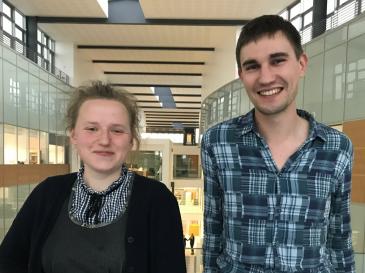JCR-SCR collaboration reveals the architecture and mechanism of an mRNA processing machine
Before a cell can build a protein, it first needs a set of ‘blueprints’, which come in the form of messenger RNA (mRNA). Each mRNA molecule is copied from the corresponding DNA sequence in the cell nucleus. However, mRNA is also further processed and modified by large multi-protein machines. One of these machines is called cleavage and polyadenylation factor (CPF), which acts at the end of the message. It contains a nuclease enzyme that first cleaves the RNA molecule, and a polymerase enzyme which then adds a poly(A) tail to the freshly-cut end. These modifications are important as they allow the mRNA ‘blueprints’ to be read more easily. But the workings of the CPF machine itself are not well understood. For instance, how is the nuclease correctly positioned and activated only once on every message?To answer these questions, Part II Natural Sciences student Vytautė Boreikaitė teamed up with Queens’ fellow Chris Hill during a summer project in Dr Lori Passmore’s group at the MRC Laboratory for Molecular Biology. They deconstructed the machinery and built it up again, piece by piece, until they could replicate the correct RNA processing reactions in a test tube. They also used electron microscopy, X-ray crystallography and mass spectrometry to reveal the molecular architecture of CPF. Together, these combined insights help to crack open a black box that is fundamental to controlling gene expression in both health and disease.
This work has been published in Molecular Cell:
https://www.cell.com/molecular-cell/fulltext/S1097-2765(18)31099-2
“The fidelity and regulation of information transfer between DNA, RNA and protein is fundamental to cell survival. After synthesis, many RNA molecules are further modified by large multi-protein machines, affecting their stability and longevity in the cell. We were able to dissect and ‘photograph’ one of these processing machines, gaining insight into how it assembles, activates and recognizes RNA for modification”.
- Dr Chris H. Hill
If any Fellows, students or staff have news items they would like placing on the College website, please send them to the Development Officer (Communications)
Alice Webster acw69@cam.ac.uk and 01223 (7)46980
T6 Fisher Building
